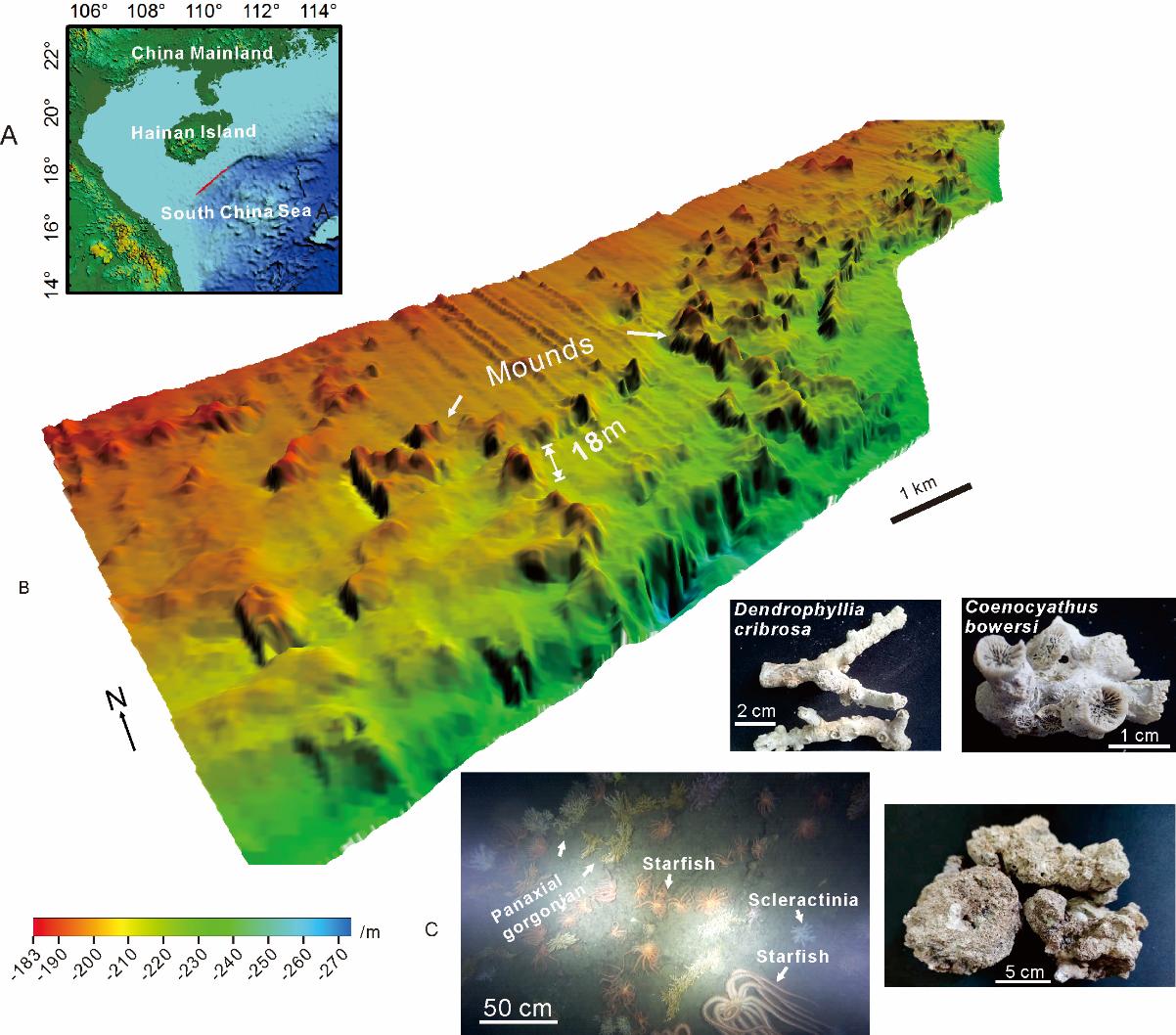Submarine landslide deposit is not only one of the most important sedimentary units at continental shelf margin and slope, but also an important geohazard, which seriously affects oil and gas drilling and submarine pipeline and cable construction. Many submarine landslides occur where widespread fluid seepage exists. It is generally believed that submarine landslide is easily induced by fluid seepage, and buried landslide deposit is in a steady state.
However, are buried landslide deposits safe? Can buried landslide deposits induce fluid seepage? These key scientific questions have remained unresolved at present.
Recently, the research team led by Prof. DONG Dongdong from the Institute of Oceanology of the Chinese Academy of Sciences has reassessed geohazards of buried landslide deposits and their impact on the seabed ecosystem by multi-discipline studies of marine geophysics and marine biology.
The study was published in Geophysical Research Letters on Mar. 2.
Using seismic reflection data, researchers found many nearly vertical seismic pipes in the shallow strata at the northwest shelf margin of the South China Sea. These pipes connect to seabed mounds and buried landslide deposits. The statistical results show that more than 96% of seafloor mounds in the area covered by three-dimensional (3D) seismic data link to the head and lateral scarps of buried landslide deposits through pipes. The seabed video and species analysis of derived rocks show that seabed mounds are cold-water coral reefs.
They conclude that differential compaction between buried landslide deposits and surrounding strata induced the release of overpressure fluids, and then fluids migrated along the bottom shear surface of landslide deposits and eventually escaped from top edges of buried landslide deposits, forming hard seabed substrate for cold-water coral colonization.
"Active regional tectonic environment and enough sediment supply are also important geological setting for fluid seepage. Buried landslide deposits indirectly leads to seabed instability by inducing fluid seepage," said CHEN Duanxin, first author of the study.
"This study constructs a model for the building of cold-water coral reefs in northwestern Pacific margin, where cold-water coral reefs are rarely discovered before," said Prof. DONG.
The research was co-funded by the National Natural Science Foundation of China, the Strategic Priority Research Program of the Chinese Academy of Sciences, and the Senior User Project of RV KEXUE.

Fig. 1 The distribution of seafloor mounds (A), geomorphic features (B), and seafloor image and rock composition (C).

Fig. 2 Buried landslide deposits induce fluid seepage under the influence of fault activity, providing hard seabed substrate for cold-water coral colonization.
Chen, D., Zhang, G., Dong, D., Zhao, M., & Wang, X. (2022). Widespread fluid seepage related to buried submarine landslide deposits in the northwestern South China Sea. Geophysical Research Letters, 49, e2021GL096584.
CHEN Duanxin
Institute of Oceanology
E-mail: chenduanxin07@qdio.ac.cn
(Editor: ZHANG Yiyi)
|
|

Address: 7 Nanhai Road, Qingdao, Shandong 266071, China
Tel: 86-532-82898902 Fax: 86-532-82898612 E-mail: iocas@qdio.ac.cn


